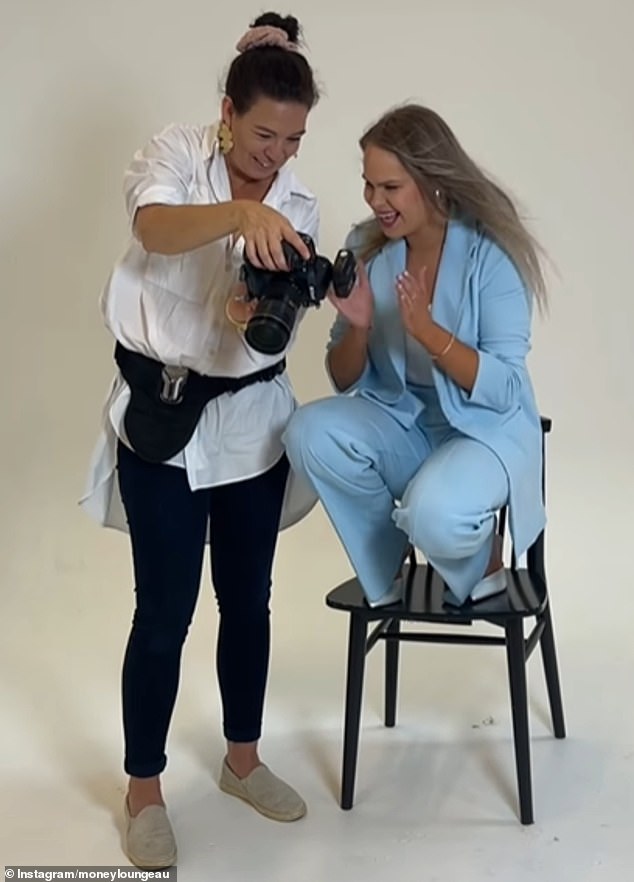I was in mortgage stress buying my first home – here’s what I’d no now instead
A young first-time home buyer struggling with mortgage stress now wishes she never bought a house or borrowed too much.
Maddie Walton was 23 when she first bought a $690,000, three-bedroom home on the Gold Coast in 2021. She was working 70 hours a week, while also juggling her job as a medical researcher and working in an Apple store.
The price was just slightly below her maximum limit of $700,000.
At the time, she was earning $78,000 from her main job and another $40,000 from her part-time job. Interest rates were still historically low at 0.1 percent.
But the Reserve Bank’s 13 rate hikes in 2022 and 2023 saw her weekly mortgage payments nearly double to $1,000 – up from $550, while the RBA cash rate rose to a 12-year high of 4.35 percent.
Mrs. Walton now wishes she had bought a more affordable home so she wouldn’t be saddled with such a hefty mortgage of $621,000, including the 10 percent down payment.
“I really wish I hadn’t borrowed to my absolute, maximum capacity,” she told Daily Mail Australia. “I really wish I hadn’t.
‘I might have bought an apartment or a townhouse instead of a house.
A young first-time homebuyer suffering from mortgage stress now wishes she hadn’t bought a house or borrowed too much
‘That would of course have made life a lot easier for me.’
To pay the mortgage, which takes up 80 percent of her income, she has two roommates who help her pay the bills. She shares space with them because she works from home.
In July, Ms. Walton launched Money Lounge, a mortgage brokerage company targeting young Millennials and Gen Zers looking to buy homes in cities.
“My own difficult experiences with mortgage advisors in the past have fueled my passion to help others who are in the same situation as me, and to do what I would like to do in a different way to support them,” she said.
‘There are a few mistakes or things I wish I had known a little better: the subsidy schemes and concessions that were available to me, but also how to take advantage of them.’
Ms Walton advises potential first home buyers to ensure they purchase a home that falls within the subsidy threshold, which in Queensland and New South Wales is now set at $750,000.
“I didn’t use it because I was borrowing and buying at my maximum capacity,” she said.
If she had her time again, she would have taken advantage of it renamed the First Home Deposit Scheme, allowing first home buyers to purchase a home in 2021 with just a 5 per cent deposit, with taxpayers footing the rest of the 20 per cent deposit.
The threshold for Queensland in 2021 was $600,000 in regional centres, meaning Ms Walton was ineligible to purchase a $690,000 home.
As a mortgage advisor, she points out the First Home Guarantee to newcomers, the new name for the same scheme that also allows buyers from the region to participate with a 5 percent down payment.
The threshold in major Queensland cities now stands at $700,000, rising to $800,000 in Victoria and $900,000 in NSW.

Maddie Walton was 23 when she first bought a $690,000, three-bedroom home on the Gold Coast in 2021, while working 70 hours a week as a medical researcher and in an Apple Store
“I love this plan and many of my clients are using it,” she said.
“It’s a fantastic way to get to market faster.”
New South Wales offers $10,000 in grants for first home buyers, but Queensland is even more generous, offering $30,000 for new construction if the contract is signed before June 2025.
The purchase threshold in both states is $750,000.
Ms Walton also warned potential borrowers against thinking they will automatically get a loan because of the grants and concessions for first-home buyers, as lenders are still assessing applicants’ spending habits.
“If you spend more than this amount on average, your expenses are higher and the bank assumes your disposable income is lower,” she said.
‘This will reduce your borrowing capacity.’
Multiple streaming services besides Netflix and many restaurant meals are charged to someone applying for a loan.
Ms Walton bought in August 2021, when former Reserve Bank governor Philip Lowe said the RBA cash rate would not rise above its historic low of 0.1 per cent until 2024 “at the earliest”.
“I wish I knew more about interest rates.”
The variable mortgage rate has risen from a ‘two’ to a ‘six’. As a result, the amount that banks can lend has fallen.
During the pandemic, banks lent more than six times their salaries (excluding taxes) to borrowers, a territory the regulator considers dangerous.
But the most aggressive rate hikes since the late 1980s have lowered that debt-to-income threshold to 5.2.

The 26-year-old Gold Coast businesswoman said she wished mortgage brokers had told her about government rebates and the prospect of rising interest rates when she bought her first home
“Borrowing capacity has declined significantly as mortgage payments have increased,” Walton said.
‘That’s why people are being priced out of the market for the places where they would ideally like to buy.
“But current interest rates reflect what has been common in the past and what we can expect in the future. I think that has reduced the lending capacity to where it should be.”
The steepest interest rate hikes in a generation are also driving up delinquencies, with borrowers falling 30 days or more behind on their mortgage payments.
New data from the Australian Prudential Regulation Authority shows the total number of problem loans rose for the seventh consecutive quarter in June.
